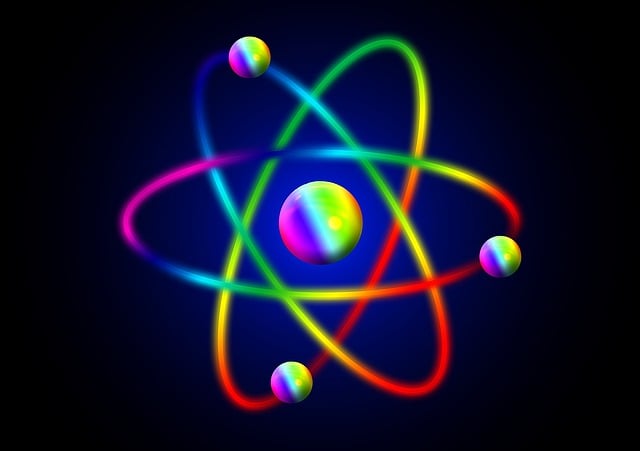PET scan contrast media utilizes radioactive tracers to visualize metabolic processes within the body, differing from conventional agents that focus on structural characteristics. Administered intravenously, these tracers target cellular metabolism, making them invaluable for detecting cancer and neurological disorders where metabolic activity diverges from healthy tissue. By providing functional insights alongside high-resolution images, PET scan contrast media enhances diagnostic accuracy and aids in treatment planning, positioning it as a powerful tool for early cancer diagnosis and staging.
“Unveiling the unique world of nuclear contrast media, this article delves into its distinct properties and mechanism, setting it apart from traditional X-ray, CT, and MRI contrast agents. While these conventional methods enhance medical imaging, nuclear contrast media offers specialized benefits, particularly in Positron Emission Tomography (PET) scans. We explore the key differences, focusing on composition, function, and clinical applications, highlighting why PET scan contrast media is a game-changer in diagnostic precision.”
Understanding Nuclear Contrast Media: Properties and Mechanism
Nuclear contrast media, primarily used in Positron Emission Tomography (PET) scans, offers unique advantages in medical imaging. Unlike X-ray, CT, and MRI contrast agents that enhance specific structures or abnormalities based on their physical properties like density or magnetic behavior, PET scan contrast media functions differently. It leverages radiotracers, typically small molecules designed to accumulate in particular organs or tissues due to their metabolic or biological activity. This targeted approach allows for the detection of subtle changes in physiological processes, making PET scans invaluable for cancer diagnosis and staging, neurological disorders, and cardiovascular assessments.
The mechanism behind nuclear contrast media involves the radioactive decay of ingested or injected tracers, which emits positrons that annihilate with electrons, producing gamma rays. These gamma rays are detected by the PET scanner, reconstructing images based on the annihilation events. This process provides high-resolution, three-dimensional visualizations of biological processes, enabling healthcare professionals to make more accurate diagnoses and treatment decisions.
X-ray, CT, and MRI Contrast Media: Functioning and Applications
X-ray, CT (Computed Tomography), and MRI (Magnetic Resonance Imaging) contrast media play pivotal roles in enhancing the visibility of specific structures within the body for medical imaging. Each type of contrast medium functions differently based on the underlying imaging technology. X-ray contrast agents, such as barium sulfate, are used to highlight the gastrointestinal tract by absorbing X-rays. This enables radiologists to detect abnormalities like blockages or ulcers not visible under normal X-ray conditions.
CT scan contrast media, often based on iohexol or iodine, improves tissue contrast in CT scans by enhancing the differences in X-ray absorption between various body tissues. This leads to more detailed cross-sectional images of organs and blood vessels, aiding in the diagnosis of conditions like tumors, bleeding, or infections. MRI contrast agents, containing gadolinium, work by altering the magnetic properties of hydrogen atoms in the body, resulting in improved signal contrast. Gadolinium contrast media is particularly useful in PET (Positron Emission Tomography) scans, where it can help detect specific molecular activity associated with diseases like cancer.
Key Differences Between Nuclear and Conventional Contrast Agents
Nuclear contrast media, used in Positron Emission Tomography (PET) scans, differ significantly from conventional contrast agents like X-ray, CT, and MRI contrast media. One key distinction lies in their mechanism of action. PET scan contrast media are radioactive tracers that emit positrons, which are annihilated by nearby electrons upon entry into the body, producing gamma rays detectable by the scanner. This allows for the visualization of metabolic processes and specific biological markers. In contrast, X-ray, CT, and MRI contrast media enhance specific structures or organs based on their density, visibility, or water content, respectively.
Another crucial difference is their mode of administration. PET scan contrast media are typically injected intravenously and distributed based on cellular metabolism, making them ideal for imaging cancerous tissues or neurological disorders where metabolic activity differs from healthy tissue. Conventional contrast agents, however, are more general purpose, used to highlight blood vessels (X-ray, CT), soft tissues (MRI) or bone structures (X-ray, CT). They offer high spatial resolution but do not provide insights into underlying biological processes like PET scans can.
PET Scan Contrast Media: Unique Features and Clinical Significance
PET (Positron Emission Tomography) scan contrast media offers unique features that set it apart from X-ray, CT, and MRI contrast agents. Unlike traditional contrast media that primarily enhance structural images, PET scan contrast media is designed to detect metabolic activities within the body. This makes PET scans invaluable for diagnosing and staging cancer, as they can identify tumor growth and metastases based on cellular metabolism rather than anatomical position.
The clinical significance of PET scan contrast media lies in its ability to provide functional information about tissues and organs. By tracing specific metabolic pathways, PET scans can highlight areas of high glucose uptake, a common indicator of cancerous cells. This unique approach allows for more precise detection and characterization of diseases, leading to improved diagnostic accuracy and treatment planning.
Nuclear contrast media, such as those used in Positron Emission Tomography (PET) scans, offer distinct advantages over traditional X-ray, CT, and MRI contrast agents. Their unique properties, including radiotracer technology and metabolic targeting, enable more precise anatomical imaging and functional assessment. While X-ray, CT, and MRI media focus on structural details, PET scan contrast media provide valuable insights into physiological processes, making them indispensable in clinical settings for detecting diseases like cancer. This specialized approach enhances diagnostic accuracy and treatment planning, underscoring the critical role of nuclear contrast media in modern medical imaging.
